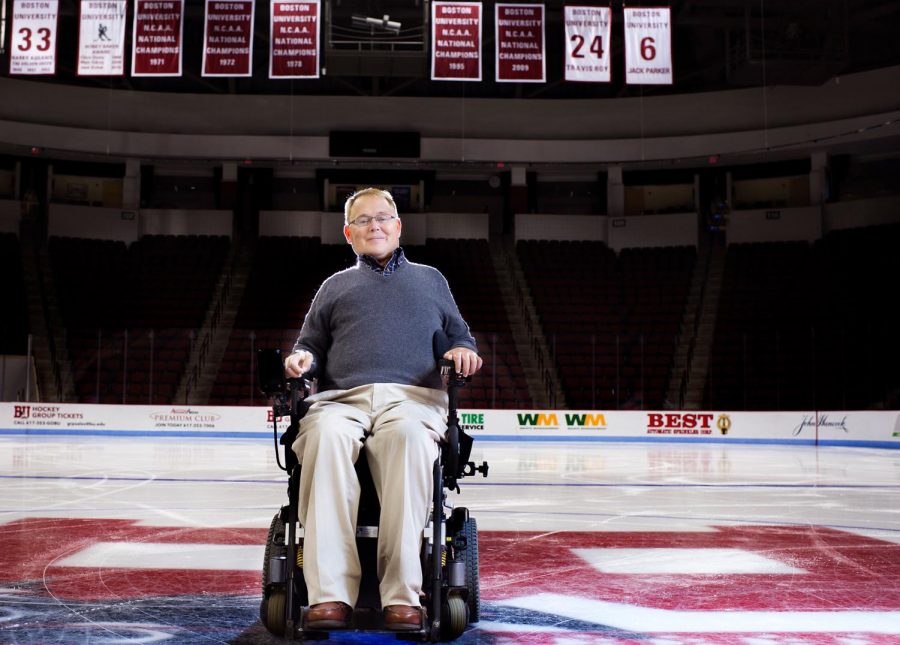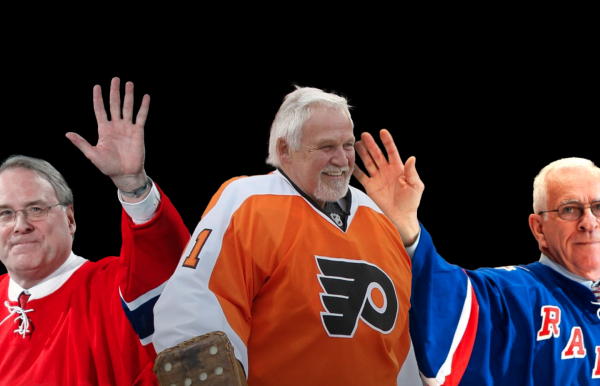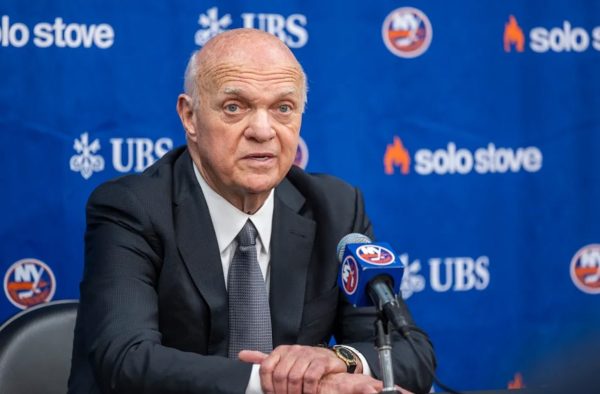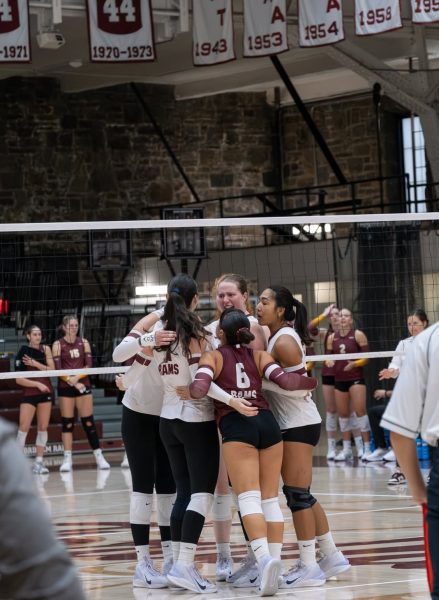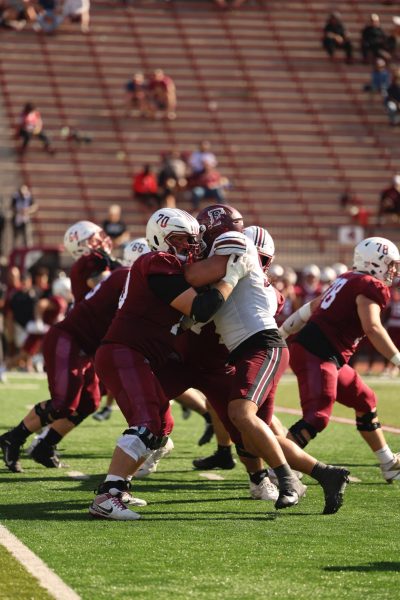Former Boston Hockey Player Travis Roy Made Most Impact Off the Ice
Travis Roy, aged 45, died of surgery complications on Thursday, Oct. 29 in a hospital near Burlington, Vermont. Roy was a Boston University hockey player who was paralyzed 11 seconds into his first collegiate game in 1995. As a quadriplegic, Roy became a philanthropist and public speaker in the remaining 25 years of his life.
On Friday, after I heard the news, I was at my job teaching “Learn to Skate” classes at my local rink in Manchester, Vermont. The class is with four- to eight-year-olds and would be more appropriately titled “Learn to Stand.” Teaching the class primarily entails holding toddlers hands and helping them get up off the ice. As I helped one little boy stand up and fall down over and over again, I offered small words of encouragement like, “Don’t worry about falling, just keep getting up.” I couldn’t help but think about Travis Roy as I said these words.
Roy was born in Augusta, Maine in 1975. His father, Lee Roy, was a rink manager and Travis’s hockey coach. “My Dad was my best friend,” said Travis. When Travis was a young boy, Lee had one rule for his son: always get up. “You might feel a little pain, but you’re not hurt, get up.” Lee would say, according to Travis.
As Roy grew older, he became a Prep Hockey star in Maine and committed to Boston University — the defending national champions and number one ranked college hockey program in the country. “My identity was as a hockey player, just a really confident, proud, really excited for life … hockey player,” Roy said about his younger self in a 2015 interview.
On Oct. 25, 1995 Roy suited up for his first game with Boston University, the team’s home opener against University of North Dakota. It was rare for a freshman to see dress for games, so Roy and his entire family were incredibly proud. Roy reflected on going to sleep the night before the game, saying, “Not many people get to go to bed, putting their head on the pillow and feeling so good about the life they created for themselves.”
In the first period, BU scored a goal to take a 1-0 lead. Jack Parker, the BU hockey coach and a hockey legend, tapped Roy on the shoulder to tell him he was going in the game. “To feel that tap on the shoulder, all his life he had waited for that,” said Lee Roy. Boston won the faceoff, and the puck was dumped into the North Dakota zone. Roy skated as fast as he could into the offensive zone and braced to hit the North Dakota defender. As the two players collided in a clean and routine play, Roy bounced awkwardly head first into the boards. His fourth and fifth cervical vertebrae were shattered instantly, paralyzing his arms and legs.
Travis’s parents were in the crowd, and Lee says he didn’t realize the severity of the accident at first. “It wasn’t until the whistle blew and he hadn’t gotten up that … you know, that goes back to the number on rule in hockey, come on Trav, there’s a game to be played let get up and let’s get going,” says Lee, through teary eyes. After a few minutes, Lee popped out of his seat and made his way down to the ice. Travis’s mother, Brenda Roy, says that at this point she knew something was wrong, because in 20 years Lee had never gone out onto the ice for an injury. As Lee walked out to his son, he saw that Travis’ head was taped down to a stretcher. Travis said to his father, “I can’t feel anything, and my neck hurts,” and then after a long pause he said, “Dad, I made it.” Even then Travis knew his hockey career was over, but he had reached his goal in life, even if only for 11 seconds. “It was my own way of saying this is over,” said Travis. “It was the dream come true and it was … the nightmare was just beginning.”
At first, doctors were unsure if Roy would live at all; but, if he survived, they knew he was going to be a quadriplegic for life. Over the next year Roy lived at a spinal therapy center in Atlanta. Eventually, he regained control of the fingers in his right hand, which he used to guide the joystick of an electric wheelchair. For the rest of his life, Roy could only get out of bed, dress himself, feed himself and brush his teeth with the help of medical assistants or family members. After a year, he returned to Boston University in 1996 to pursue his education and to begin constructing an entirely new life for himself. “I didn’t know how to interact with the world,” said Roy, “I didn’t know who I was; I wasn’t a hockey player anymore, so I had to figure out who I was going to become.”
Roy graduated in 2000 in an awe inspiring display of perseverance. He studied tirelessly and used a plastic rig attached to a mouthguard to underline texts and flipped pages using his head. Roy said his Boston University graduation was “one of the first times I felt like I had accomplished something since my injury … I felt like I mattered a little bit.” As early as his graduation, Roy had a vision for the Travis Roy Foundation to improve the quality of life of quadriplegics and to advance spinal cord research. “Part of that was a little bit selfish,” said Roy. “I needed that hope.”
Over the next 25 years of his life, Roy passed that hope onto others, growing his foundation into a massive operation, helping more than 2,100 quadriplegics and donating more than $5 million to spinal cord research. In a 2014 award ceremony, Roy said, “I want to thank my family and friends for coming here tonight.” He then paused for a long time, choking back tears. “But more importantly … I want to thank them for being there for the last 19 years … they’ve helped give me a life that is every bit worth living.”
This is not a feel-good story. I cry every time I watch the interviews of Roy and his family. There’s one particular interview in which Roy broke down in tears when describing the loss of his former life. “You know it was just really fun, being that Travis Roy,” he said. Roy was an inspiration to the hockey world, and he enriched the life of every spirit he encountered. Roy rebelled against the injustice and the absurdity of the world. He took a cruel tragedy, and through sheer willpower he made it slightly less cruel than it could have been, and for that he deserves the highest level of respect there is.
Roy was 45 years old when he died. He was 20 years old when he was paralyzed — he never walked again, but he kept getting up.





































































































































































































